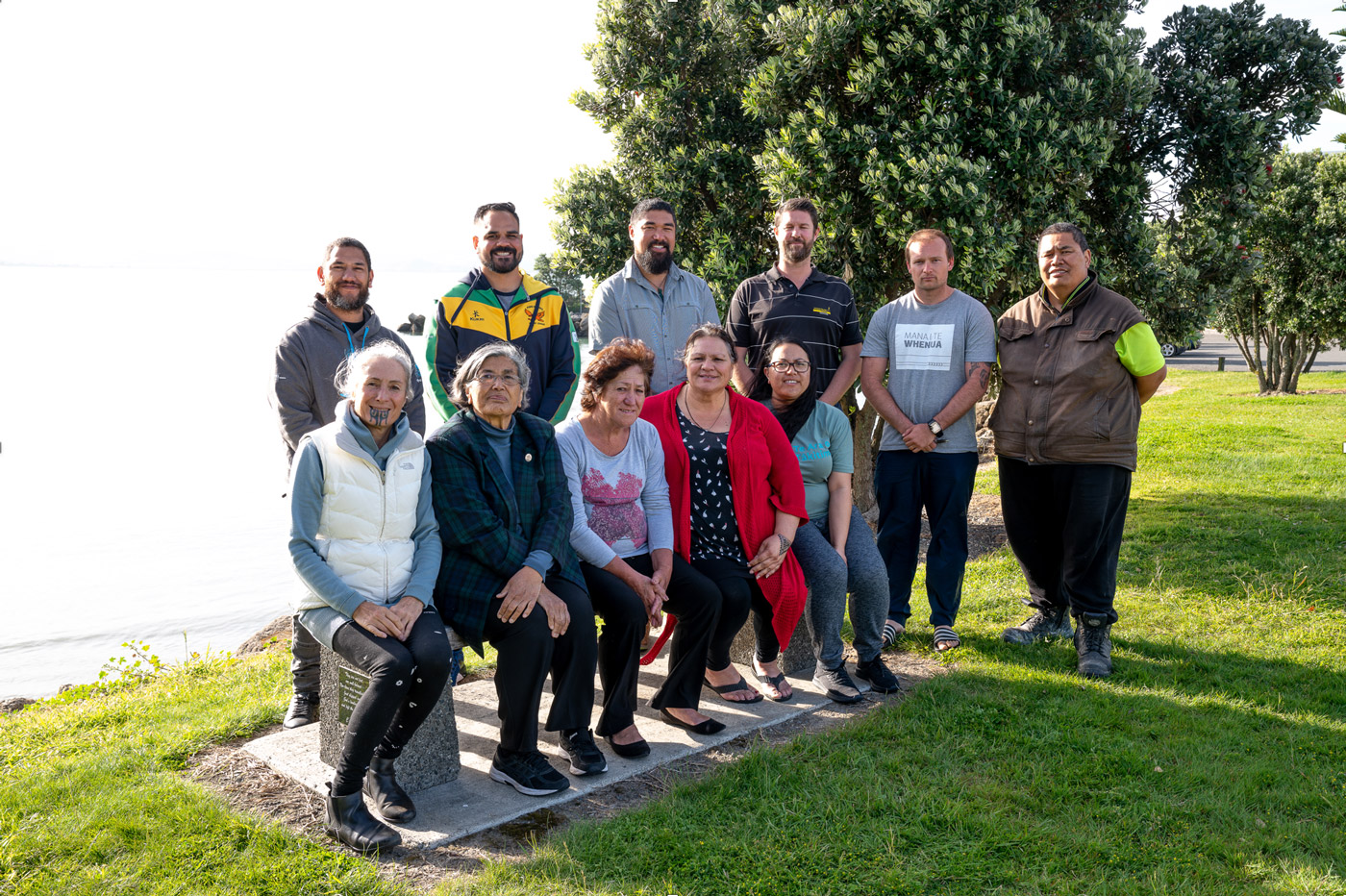Napier Port is working with mana whenua hapū to protect the Ahuriri marine environment and engage the community

Back from left: Chad Tareha (Nga¯ti Pa¯rau Hapu¯ Trust), Laurie O’Reilly (Waiohiki Marae), Te Kaha Hawaikirangi (Pou Tikanga, Napier Port), Shane Gilmer (Kaimatai moana), Tipene Cottrell (Wharerangi Marae), and Hoani Taurima (Maungaharuru-Tangitu¯ Trust). Front from left: Jenny Mauger (Te Matau a Ma¯ui Tangata Kaitiaki Collective), Margie McGuire (Kohupatiki Marae), Mary Martin (Petane Marae), Marewa Reti-King (Tangoio Marae), and Moana Hakiwai (Timikara Marae).
The Ahuriri Marine Coastal area and Pānia Reef is an important place for mana whenua and residents of Te Mataua Māui or Hawke’s Bay.
It contains taonga of cultural value for hapū and is the home of Pānia Reef; a site of cultural significance as the embodiment of the sea maiden, Pānia. It’s also an important site for gathering kaimoana as a designated mahinga mātaitai.
The Marine Cultural Health Programme, the first of its kind to be created in Aotearoa New Zealand, is a partnership between mana whenua hapū and Napier Port to ensure the cultural and ecological health of the area is protected as the port builds a new wharf to ensure sustainable growth now and in the future.
When Napier Port started planning 6 Wharf several years ago, it made it a priority to understand the needs of the neighbouring communities. In 2019, the port appointed Te Kaha Hawaikirangi as Pou Tikanga and Environmental Adviser, with a role to help establish the Marine Cultural Health Programme and support Napier Port’s wider cultural journey.
“Joining Napier Port was a fantastic opportunity to continue the mahi around our region’s environment that I had previously been involved with at the Hawke’s Bay Regional Council, and Department of Conservation before that,” Te Kaha Hawaikirangi said.
“Designing a Marine Cultural Health Programme from scratch, without an existing framework to reference as an example, has been a big challenge, but working closely with mana whenua hapū has helped us to create a localised programme that speaks to the rich traditions of Ahuriri, its people and environment.”
In partnership with mana whenua hapū, Napier Port has developed the Marine Cultural Health Programme (MCHP) to protect, monitor and assess the cultural health of the marine environment, in particular Pānia Reef, during the 6 Wharf project. The port is also working with a Fisheries Liaison Group to ensure robust procedures to manage water quality and fisheries during disposal and dredging.
The MCHP has been founded on three key pillars, each of which are informed by the conditions of the resource consent for the 6Wharf project. These pillars include: assessing and reporting on the state of the marine environment from a mātauranga Māori perspective; ensuring the cultural health of the marine environment is surveyed and monitored through out the project, with specific reference to Pānia Reef, and; that Napier Port work in partnership with mana whenua.
A rōpū of representatives from different marae, hapū and mana whenua entities within the development area have come together to form the programme’s Steering Komiti (as pictured). Collectively, the komiti have developed a cultural monitoring framework, which is being used alongside an extensive monitoring programme.The programme includes surveying and a web based dashboard, which displays the latest information, to ensure the planned 6Wharf dredging operations are not adversely affecting the Ahuriri marine environment during the project.
The Steering Komiti chairman, Chad Tareha (Ngāti Pārau Hapū Trust) said,“The port sought to engage all mana whenua entities in the komiti, and this has been valuable as it has provided for diverse and meaningful dialogue in the creation of the programme.
“The rōpū have also been able to directly involve whānau in this journey to date — taking a number of them through a mammal training session at the port’s kororā sanctuary and conducting surveys of mahinga kai species. We’re looking forward to continuing this important mahi over the coming years,” he said.
A website is currently being developed for the MCHP and will provide information to the public about the programme as well as monitoring data and assessments. The website marineculturalhealth.co.nz is set to launch at the end of this year. Until then, visit NapierPort’s Building in Partnership page for more information about the Marine Cultural Health Programme: napierport.co.nz/ourbusiness/our-future/6-wharf/
building-in-partnership/. Construction on the 6 Wharf began at the start of 2020 and is due to be completed at the end of 2022.
